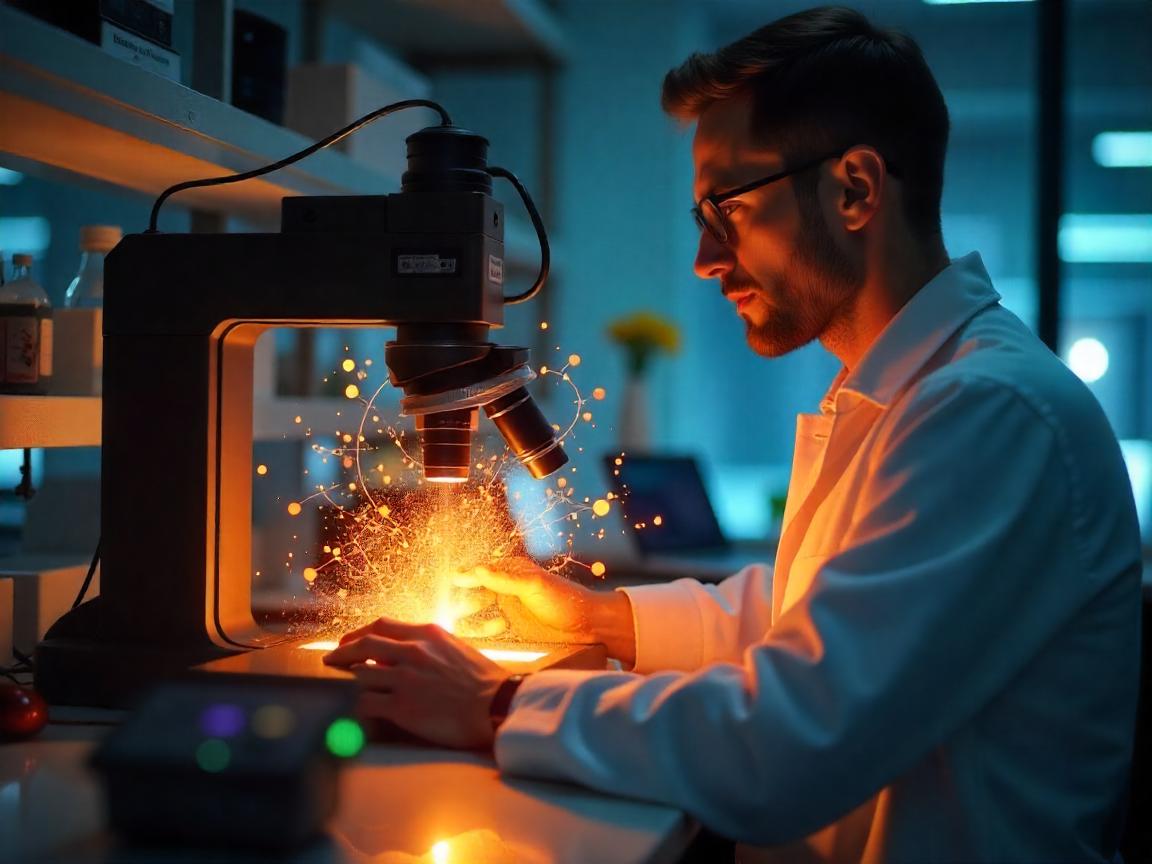
When moments ago science went subatomic in real time.
You’d expect something that small, and so fleeting, so elusive and so infinitely small itself could never be seen in motion. For years, the best microscopes provided frozen pictures of atomic orderings. However, that’s no longer true. These days, AI isn’t just viewing atoms; it’s its watching them dance, collide, move, and reconstitute matter before our eyes. This jump is more than technological magic – it marks the birth of a new language of science—one where machines read nature’s finest moment in live-time.
This year, researchers from UCLA, backed by advances from Lawrence Berkeley National Laboratory, revealed how together deep learning algorithms could be used to observe the dynamic movement of atoms in metallic nanoparticles together with transmission electron microscopes. It’s a revelation that delivers to scientists one thing they could have long dreamed of – the moving picture of the material world at its most fundamental scale.
The Exceptional Discovery That’s Changing Materials Science
STEM imaging has been around for some time, but it’s slow and noisy and has often left scientists to “guess” at what is happening between frames. Today, AI models that have been given terabytes of atomic-level data to read can remove the background noise and see what each atom is doing next, frame by frame. This isn’t just enhancement—it’s transformation.
Consider the latest Nature paper written by Dr. Jianwei Miao team at UCLA. Via deep neural networks, they imaged the 3D lattice distortions in platinum nanoparticles at thermal expansion. AI wasn’t only creating still pictures; it was translating motion, stress distribution, and structural imperceptible anomalies. As a materials engineer myself I can recall the years we’ve spent to find out what the fracture tipping point is in 2D materials under stress. This tech? It provides that answer in seconds with clarity down to an atom level.
And, already we are seeing pragmatic implications.
- IBM’s AI-enhanced materials platform is accelerating the materials development of the next generation of semiconductors.
- Sandia National Laboratories is employing similar systems to determine how radiation deforms nuclear materials.
- Engineers at TSMC are using this tech to track what’s happening at atomic levels in chip structures to boost yields while reducing waste.
A Case Study from the Medical Frontier
It is one thing to image gold atoms and quite another to be able to do it in real life and that is when we move into the biomedical sphere. A joint research project between MIT and Moderna completed in 2024 used nanoparticle imaging upgraded by AI to optimize mRNA lipid nanoparticles. Previous to this, the delivery vehicles for mRNA therapies tended to suffer from 10-15% inefficiency related to unpredictable cell level interactions.
Now? With AI-enhanced cryo-EM imaging the team refined the lipid structures, enhancing delivery efficiency to over 87%, according to studies on live-cell imaging. In other words, it’s faster and more accurate delivery of treatments – not just COVID, but cancer and neurological diseases.
“The researchers found that…,, Dr. Rebecca Fields, lead researcher at MIT’s Koch Institute, commented. “AI allowed us the atomic-resolution insight to understand how – and where – the lipids were failing. Without that we’d still be guessing. It’s not a better microscope, it’s a smart co-pilot in biological innovation.
Democratising Nanoscience—A Global Impact Often Overlooked
A White House and industry report predicts a shift that’s just as revolutionary – but far less discussed – AI is flattening the field for global researchers. Before, atomic imaging had been walled off in million dollar instruments residing in wizard labs. Now, due to the open-source AI frameworks, the cloud-based imaging models, even a resource-limited institution can be a part of it.
University of Science and Technology in Ghana engaged IBM Research Africa in 2023 to train a localized AI model for nanoparticle analysis. Using the standard low-res electron microscopes, they were able to produce a map of gold nanostructures for clean water filtration thanks to the use of AI. It wasn’t even a scientific victory. It proved that researchers no longer needed a Western postcode to access nanotechnology.
